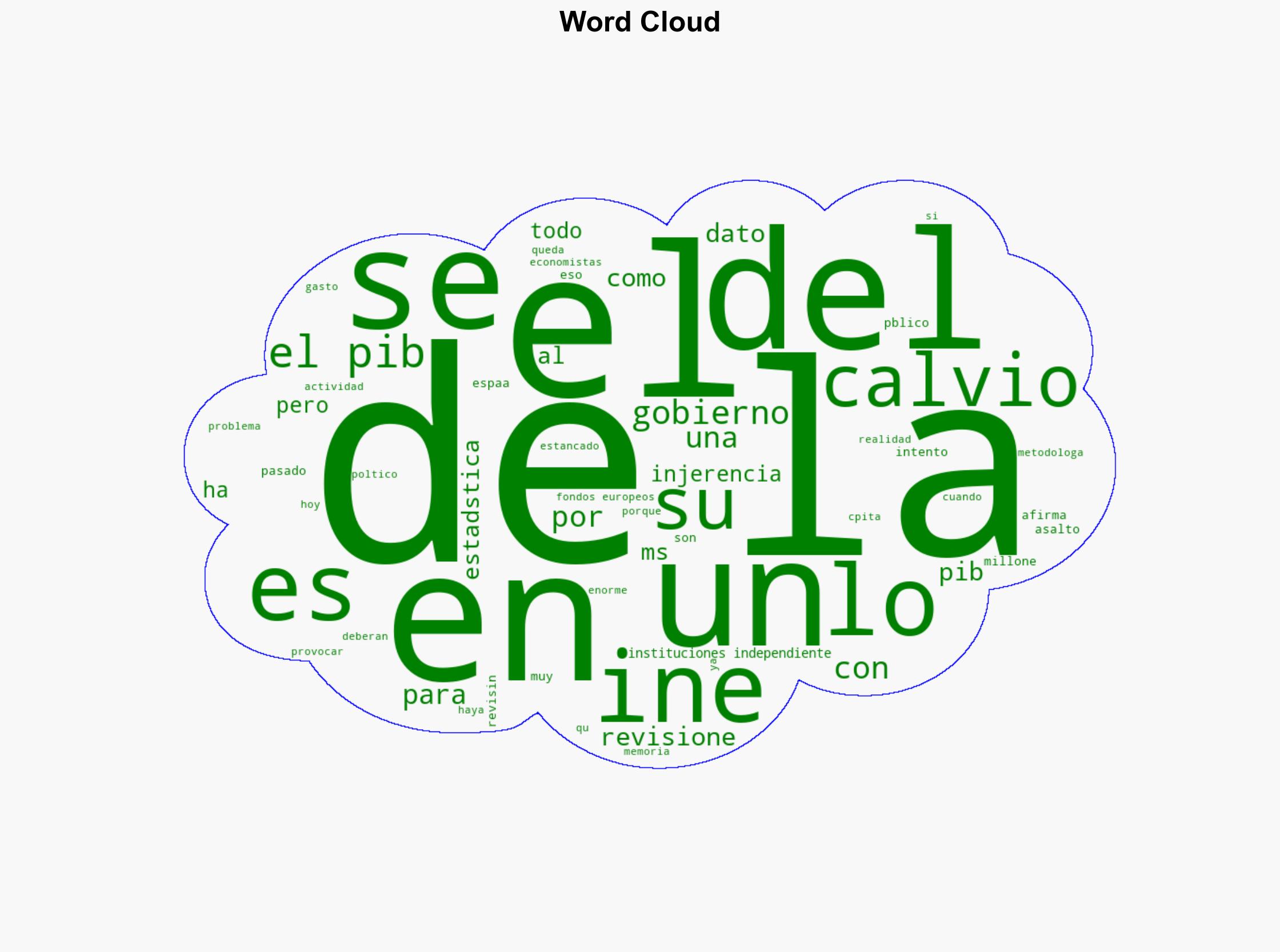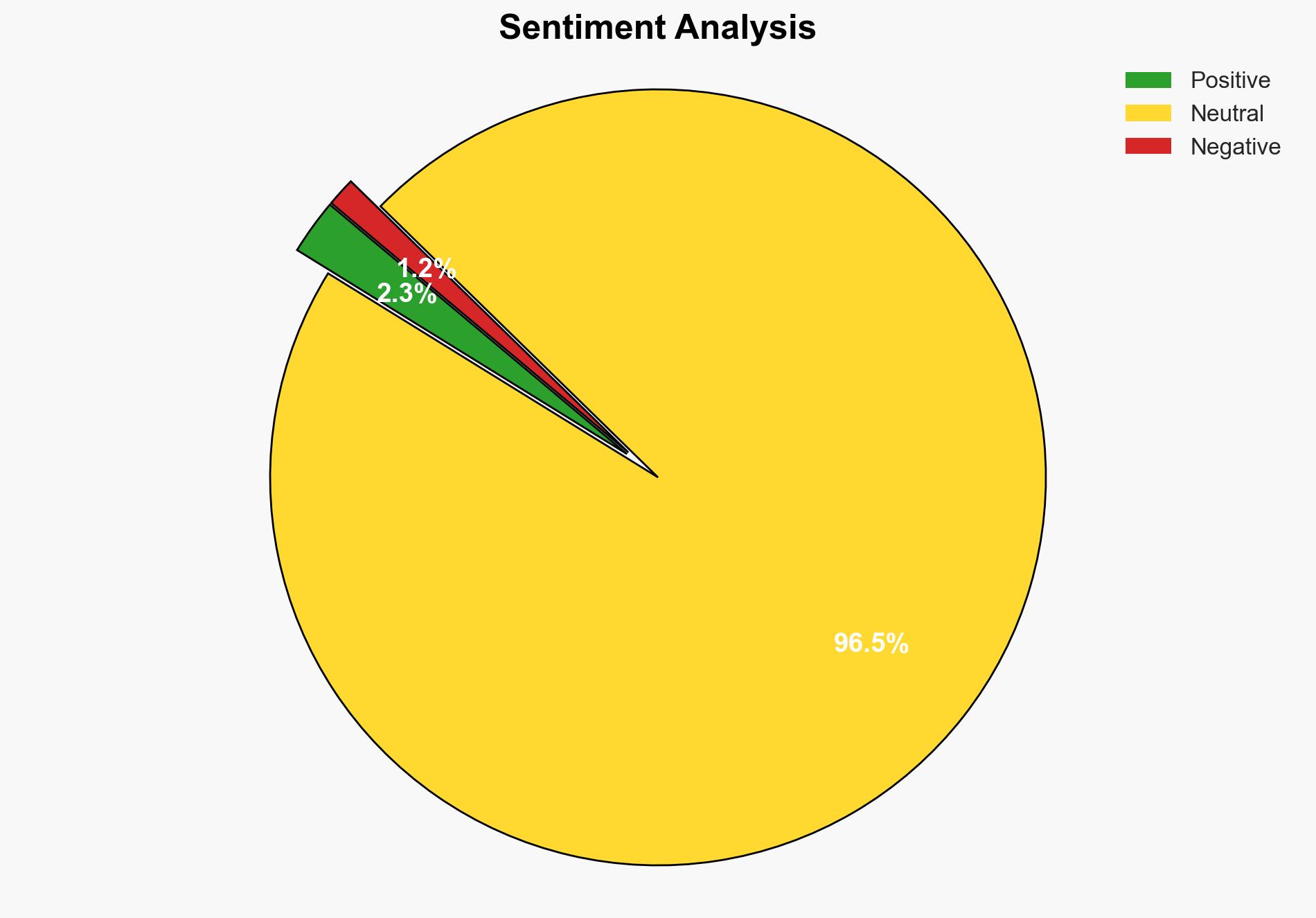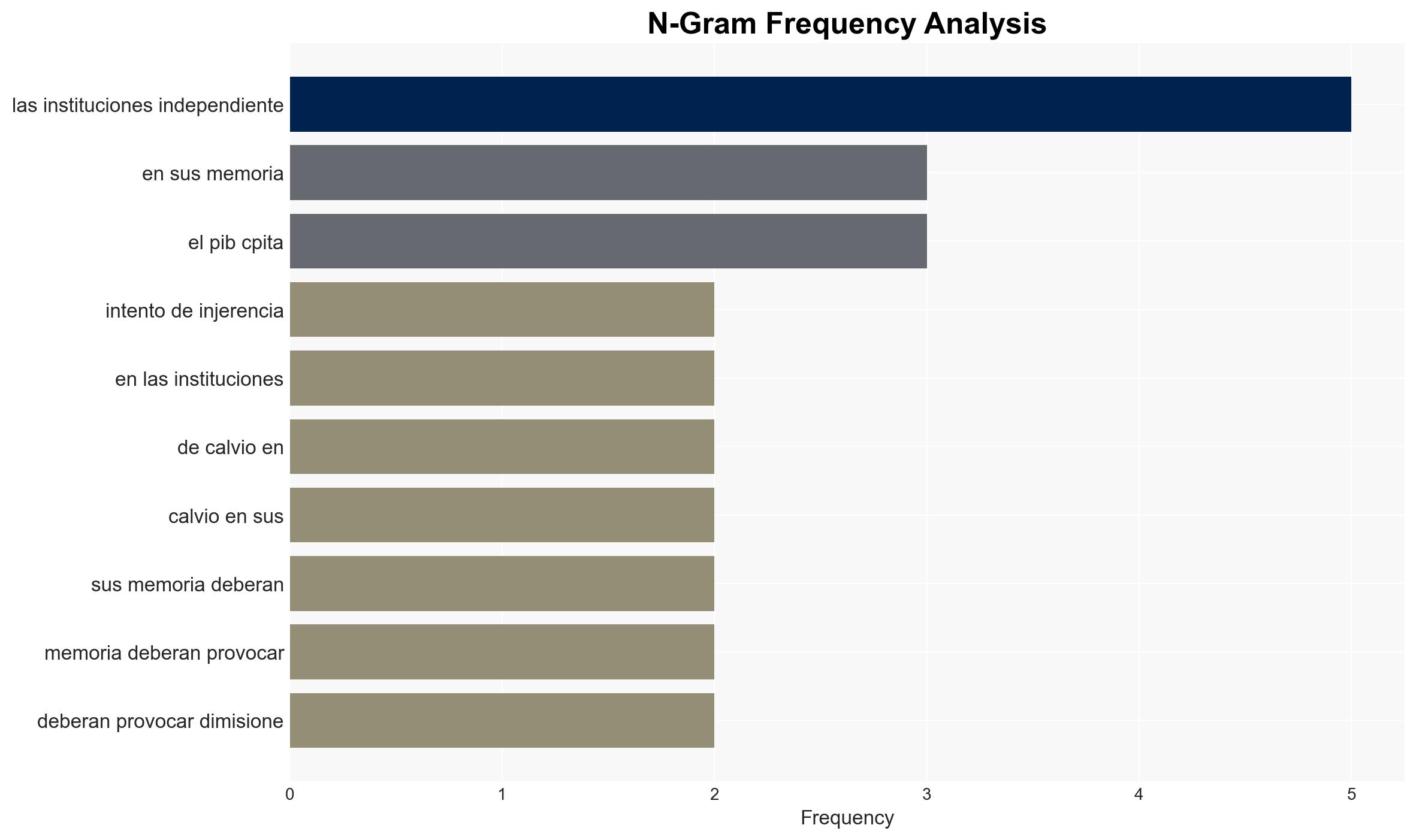El intento de asalto al INE de Calvio es solo la punta del iceberg – Elespanol.com
Published on: 2025-11-15
AI-powered OSINT brief from verified open sources. Automated NLP signal extraction with human verification. See our Methodology and Why WorldWideWatchers.
Intelligence Report: El intento de asalto al INE de Calvio es solo la punta del iceberg – Elespanol.com
1. BLUF (Bottom Line Up Front)
The most supported hypothesis is that the Spanish government’s actions, led by Nadia Calviño, represent a strategic attempt to influence independent institutions like the INE, potentially undermining democratic checks and balances. This poses a significant risk to institutional credibility and democratic integrity. Confidence Level: Moderate. Recommended action includes increased scrutiny by European bodies and domestic audits to ensure institutional independence.
2. Competing Hypotheses
Hypothesis 1: The Spanish government’s actions are a deliberate attempt to exert influence over the INE to align economic data with political agendas, thereby undermining institutional independence.
Hypothesis 2: The actions are a result of miscommunication and a genuine attempt to improve statistical methodologies, misunderstood as interference.
Hypothesis 1 is more likely due to the pattern of behavior described, including public statements and the involvement of government-affiliated economists, suggesting a coordinated effort rather than isolated miscommunication.
3. Key Assumptions and Red Flags
Assumptions: It is assumed that the INE’s statistical methodologies were sound prior to government intervention. The credibility of the source is assumed to be reliable.
Red Flags: The public nature of Calviño’s statements and the involvement of a cohort of economists suggest a potential strategic narrative. The lack of immediate response from European oversight bodies may indicate either complacency or a strategic decision to prioritize other issues.
4. Implications and Strategic Risks
The primary risk is the erosion of trust in independent institutions, leading to potential political instability and loss of public confidence. If unchecked, this could escalate to broader democratic backsliding. Economically, manipulated data could lead to misguided policy decisions, affecting Spain’s fiscal stability and international reputation.
5. Recommendations and Outlook
- Actionable Steps: Advocate for immediate audits of the INE by independent bodies. Encourage European institutions to increase oversight and issue statements reinforcing the importance of institutional independence.
- Best Scenario: European intervention leads to restored confidence in the INE, and the Spanish government commits to non-interference.
- Worst Scenario: Continued interference results in significant loss of institutional credibility and potential economic mismanagement.
- Most-likely Scenario: Incremental reforms and oversight lead to gradual improvement, but underlying tensions persist.
6. Key Individuals and Entities
Nadia Calviño, Spanish Government, INE (Instituto Nacional de Estadística), European Commission, European Central Bank, Eurostat.
7. Thematic Tags
National Security Threats, Institutional Integrity, Democratic Governance, Economic Stability
Structured Analytic Techniques Applied
- Cognitive Bias Stress Test: Expose and correct potential biases in assessments through red-teaming and structured challenge.
- Bayesian Scenario Modeling: Use probabilistic forecasting for conflict trajectories or escalation likelihood.
- Network Influence Mapping: Map relationships between state and non-state actors for impact estimation.
Explore more:
National Security Threats Briefs ·
Daily Summary ·
Support us
·





